Table of Contents
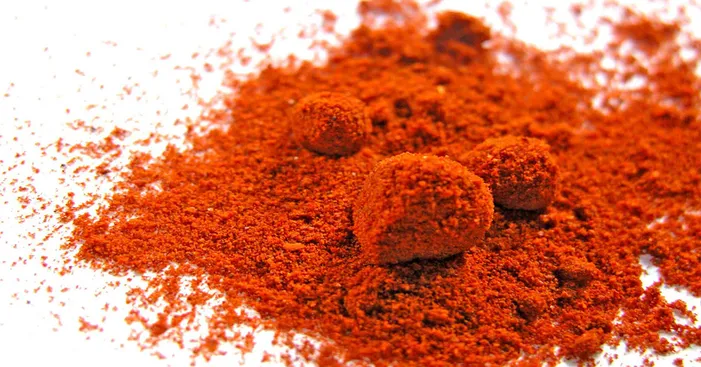
Red Chilli powder is known for its spicy kick, but did you know that consuming this spice can also provide numerous health benefits?
It is a great source of vitamins and minerals, and it can help improve your overall health.
In this blog post, we’ll discuss the various benefits of incorporating red chili peppers into your diet, including improved digestion, boosted metabolism, and improved cardiovascular health.
We’ll also discuss the various ways in which you can incorporate red chili peppers into your meals.
Read on to learn more about the amazing health benefits of red chili peppers.
Red chilli general facts:

What is Red chilli?
Red chilli AKA Paprika is commonly used to refer to red pepper powder which is obtained by grinding previously dehydrated chilies.
There are many varieties of this product, among them the hot paprika in Spain and the cayenne pepper, which is not pepper but small ground cayenne peppers.
Each of these varieties has its own flavor and its heat depends on the original pepper and the way it is processed.
If the pulp of the peppers is ground without the seeds and membranes inside, the result will be much less spicy because it is in these that the highest concentration of capsaicin, the element responsible for the spiciness and benefits is found.
Red chilli: overview
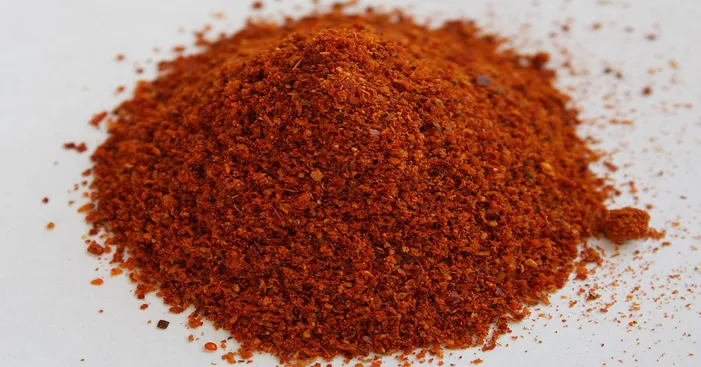
Pepper originates from America and was introduced in Europe by the colonizers. Each region has its own variety, distinguished by different nuances.
In Portugal and Spain, ground red chilli is sweeter and more aromatic, while the Orient offers spicier flavors.
This spice became popular in Europe after its arrival, being used to season and color various sausages and dishes.
It is also commonly called paprika in French, sweet paprika in Italian, and pepper powder in German and Dutch.
In Hungarian cuisine, spicy red chilli is commonly used for goulash and sausages, being considered the national spice.
However in Spain, sweet and spicy chilli powder is widely used in the preparation of chorizos, chistorras, and sobrasada.
As for the Tunisia cuisine, the dried red chilli puree known as harissa is found in couscous.
In Southeast Asia, there are many popular paprika varieties such as labuyo pepper and mahaba pepper in the Philippines and Thai pepper in Thailand, Cambodia, Laos, Vietnam, Malaysia, Singapore, and Indonesia.
In recent years, red chilli AKA paprika has also spread to countries such as the United States, where it is used in BBQ sauce.
Types of red chilli:
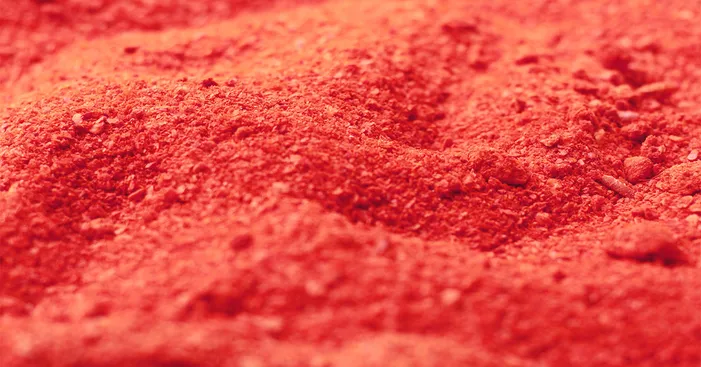
- Sweet red chilli: is a very popular variety of pepper.
It is known for its mild and slightly sweet flavor, without any spice.
This variety is usually made from a specific variety of chili pepper, called “ball”. - Sweet and sour red chilli: is a seasoning obtained from the local variety of peppers (capsicum longum L.).
It has a semi-sweet taste, a slight itchy touch, and an intense red color.
It cannot be obtained by mixing sweet and sour paprikas. - Hot red chilli: As the name suggests, this is a paprika with an intense spicy flavor.
Red Chilli nutritional values and health benefits :
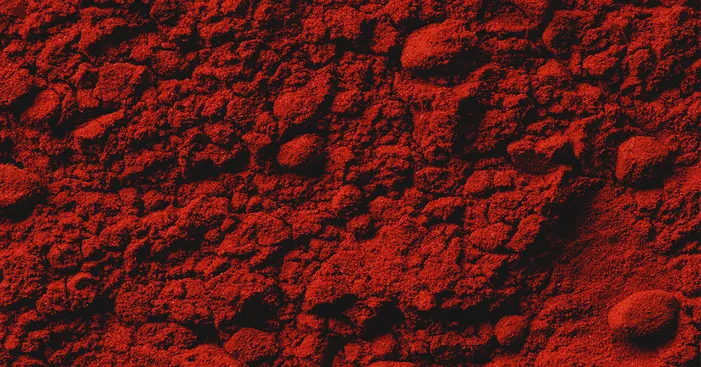
Nutritional values:
The pepper is rich in vitamins (A, B6, C, E, K, and PP), minerals (copper, calcium, iron, manganese, magnesium, and potassium) and nitrogenous substances, cellulose, oil, water, and mineral salts.
Moreover, it contains an aromatic essence that gives it its characteristic taste.
Chilli is an exceptional source of powerful antioxidants, including flavonoids such as luteolin and quercetin.
These substances help cells fight free radical damage, which can lead to various health problems.
Chilli seeds contain an active substance that is valued both in medicine and in natural healing methods: capsaicin.
This chemical molecule is responsible for the strong, pungent flavor of the hottest pepper varieties.
It is also responsible for the hot, burning sensation when eating spicy foods. The higher the level of capsaicin in a food, the more likely it is to burn the mouth.
Health benefits:
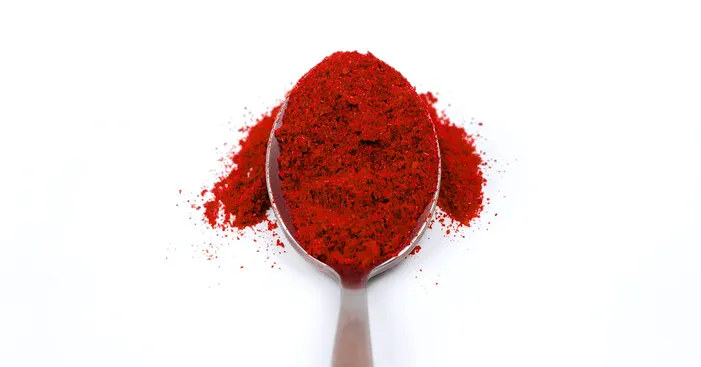
Good for the cardiovascular system:
Capsaicin, a compound found in red chili peppers, may be beneficial for cardiovascular health.
Human studies have shown that it lowers cholesterol and triglycerides in the blood, inhibits platelet aggregation, and prevents the buildup of fibrin, a substance that forms blood clots.
People who consume chilies regularly are less likely to develop cardiovascular diseases such as heart attacks, strokes, and pulmonary embolisms.
One study found that 30 grams of freshly chopped chilies consumed daily for 4 weeks reduced lipid oxidation and made blood fatty acids more resistant to oxidative damage.
Participants who ate chili peppers also experienced an increase in blood supply to the heart muscle and a decrease in average inclined heart rate.
Further research is needed to evaluate the therapeutic effects of capsaicin on human cardiovascular health.
Helps lose weight:
The WHO estimates that about one-third of the world’s population is overweight or obese, which increases the risk of developing various diseases and conditions.
Researchers at the University of Wyoming have found that small amounts of capsaicin can prevent weight gain in mice.
More studies are needed to determine if this chili pepper extract can help prevent and reduce weight in humans.
Capsaicin can suppress appetite and increase thermogenic metabolism.
It may affect lipid metabolism and blood sugar regulation.
Mice fed high-fat diets with capsaicin showed less weight gain.
Capsaicin may also stimulate the production of brown fat, a type of fat that is converted to heat and may aid in weight loss.
Offer great anti-inflammatory properties:
Capsaicin is an anti-inflammatory agent known for its analgesic properties.
Substance P, a neuropeptide and neurotransmitter, is inhibited by this compound.
Studies on mammals with induced inflammatory arthritis have shown that capsaicin delayed the onset of symptoms and reduced inflammation in the legs.
Topical applications of capsaicin have been shown to relieve pain in arthritis, postoperative neuralgia, diabetic neuropathy, and psoriasis.
It is also considered an effective treatment for pain associated with osteoarthritis and diabetic neuropathy.
Helps treat prostate cancer:
Studies suggest that capsaicin may have anti-cancer properties.
According to the AACR (American Association for Cancer Research), capsaicin suppresses the spread of prostate cancer cells via apoptosis, reduction of PSA expression, and inhibition of dihydrotestosterone and PSA transcription.
Animal studies have shown that 4 weeks of capsaicin administration resulted in a significant reduction in the size and growth of prostate tumors.
However, more research is needed to determine the effectiveness of capsaicin in humans.
The FDA has not yet approved this product as a drug for the prevention or treatment of cancer.
An ally to bone’s health:
The carotenoids found in red chilli may be beneficial for bone health in postmenopausal women.
A study published in Food and Nutrition Research found that supplementing with the carotenoid paprika extract can reduce the rate of bone resorption in these women.
Researchers divided 100 healthy postmenopausal women into two groups, one receiving a placebo and the other receiving a dose of 20.1 mg of paprika carotenoid extract (equivalent to 4 mg of carotenoids) per day for 24 weeks.
The results showed that the supplemented group had significantly lower levels of bone resorption than the placebo group, suggesting that the extract may help maintain bone quality in postmenopausal women.
Benefits the eyes:
This spice is a source of vitamin E, beta-carotene, lutein, and zeaxanthin, nutrients that can protect and improve eye health.
Research has shown that consumption of these nutrients is associated with a reduced risk of age-related macular degeneration and cataracts.
The antioxidants lutein and zeaxanthin, in particular, may prevent eye damage.
One study found that a high dietary intake of lutein and zeaxanthin was linked to a 32% lower risk of cataracts.
Another study of 4,519 adults also found that higher lutein and zeaxanthin intake was associated with a reduced risk of eye disease.
Prevents anemia:
Red chilli is rich in iron and vitamin E, important nutrients for maintaining healthy blood.
Iron is an essential part of hemoglobin, a protein in red blood cells that carries oxygen throughout the body, and vitamin E is needed to create healthy membranes for these cells.
A deficiency in either of these nutrients can lead to anemia, characterized by fatigue, pale skin, and difficulty breathing.
A study of 200 young women showed that low iron intake increased the risk of anemia sixfold.
Other animal studies suggest that vitamin E is very effective in repairing damage to red blood cells; its deficiency can also cause anemia.
Other health benefits:
- Protects the vessels.
- Improves digestion.
- Prevents aging.
- Protects from Parkinson’s disease.
- Boosts the immune system.
- Reduces bad cholesterol.
- Could prevent memory loss.
Precautions before you consume Red chilli:

Despite its many benefits, pepper powder can cause serious health damage.
It is not only when it is abused that it can be dangerous.
Under certain conditions, it is advisable not to consume this type of condiment.
The consumption of red chilli pepper is contraindicated in the case of:
- Renal disease.
- Ulcers or Gastritis.
- Severe hypertension.
- Wounds, Cuts, dermatitis.
- Pancreatitis, cholecystitis.
People with diabetes need to limit or completely avoid the consumption of hot peppers.
However, it may have beneficial effects on people with type 2 diabetes.
Nonetheless, it should be remembered that paprika made from red peppers can also pose health risks.
Therefore, it is recommended to consume it with caution and to carefully monitor the effects it may have on the body.
- Increased sweating: In the context of excessive dependence on spicy foods, increased secretion of sweat glands may develop.
- Enhance the effect of medications: This spice leads to the thinning of the blood.
Because of this property, the product can improve the effect of certain drugs on the body. - The occurrence of allergies: An unpleasant reaction may occur in the form of a rash, itching, or redness of the skin.
Such side effects can occur both after local exposure and following the internal use of peppers.
Therefore, those who are allergic to kiwi, bananas, and citrus fruits should try hot seasoning therapy with extreme caution. - The onset of gastritis: If the gastric mucosa is constantly exposed to irritation, the onset of gastritis may occur and, in the future, the risk of developing an ulcer cannot be excluded.
During pregnancy and breastfeeding, it is not recommended to consume hot spices.
This can have harmful consequences for the mother and her baby, including miscarriage or premature birth.
However, moderate incorporation of hot spices into the diet can help strengthen the immune system and thus prevent many diseases.
Nutritionists believe that 5 grams (1.5 tsp) of paprika per day is acceptable.
However, excessive consumption can lead to undesirable consequences for the person who does not expect it.
Using Red chilli:

Paprika is a versatile spice often used in many national cuisines.
It adds a distinctive tangy aroma to any dish and is particularly useful for enhancing the flavor of chicken, beef, lamb, and pork dishes.
It can also be used to add color and flavor to meat soups, chicken sausages, homemade ketchup, eggplant boat, stuffed zucchini, and goulash.
You can even add paprika to marinating nuggets and cooking vegetables such as cabbage, potatoes, carrots, and peppers.
Hungarian goulash:
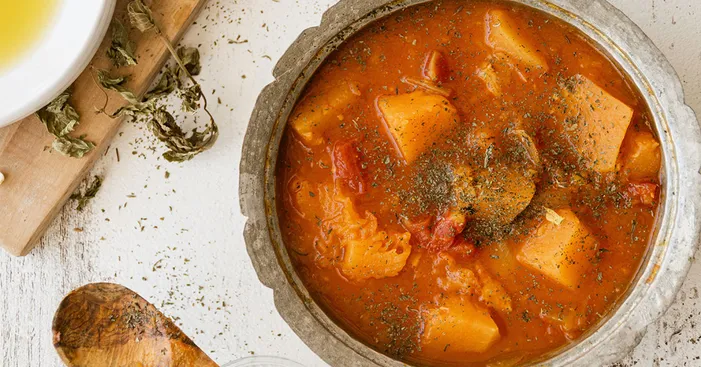
Ingredients:
- 2 lbs of beef.
- 2 lbs of potatoes.
- 2 garlic cloves.
- 3 tbsp of red chilli powder.
- 2 onions.
- Parsley and dill.
- 2 tbsps of vegetable oil (olive oil)
- 1 tsp of cumin and 1 tsp of salt.
Preparation:
- In a preheated frying pan, cut the meat into pieces.
- Chop the onion and garlic. Place with the meat and fry until golden. Add the cumin seeds.
- Cut the potatoes into cubes and the red chilli powder into strips.
- Add the red chilli powder to the meat along with salt and boiling water. Simmer for 5 minutes.
- Add the potatoes, onions, and garlic and cut into thin slices beforehand.
- Cover and cook for half an hour. After removing it from the stove, the dish should be infused for 15 minutes.
Red chilli sauce:
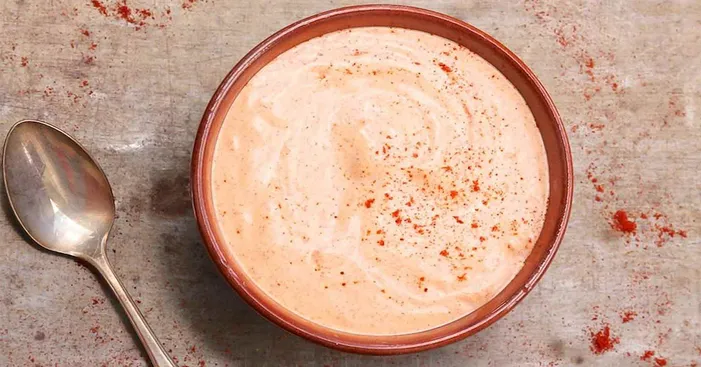
This sauce is served with beef stew, baked pork, or chicken fillets.
It goes well with other ingredients in sandwiches and hamburgers.
It is used as a pickle when roasting meat.
To do this, grease the meat with it and let it sit for 90 minutes.
In order not to spoil the taste and aroma of this sauce, it is not recommended to add other spices.
Otherwise, it will acquire a distinctive bitterness and smell. It is important to remember that you should not store it for more than one day.
Ingredients:
- 5 tsp of red chilli.
- 2 tbsps of mayonnaise.
- 5 tsp of mustard.
- 2 tbsps of sour cream.
- Dill leaves.
Preparation:
- Before preparing this sauce, you must choose the right ingredients.
It is best to use full-fat sour cream to give the sauce a richer taste. - The mustard should not be too hot.
- Mix the sour cream with the mustard.
- Add paprika to the mayonnaise.
- After 7-10 minutes, combine the two masses in a bowl and whisk well.
- After 15 minutes, it can be served or used as a marinade.
Buying Red chilli:
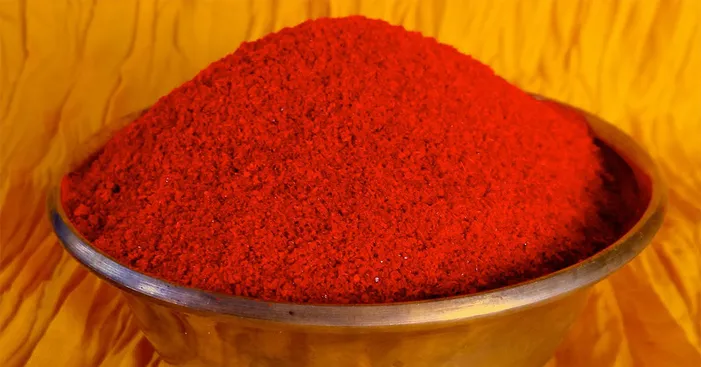
Red chili powder is a very convenient and easy-to-use product. It’s perfect for adding extra flavor to your favorite dishes. Here are some tips on how to choose the best quality:
- Look for quality: You want to make sure that you are buying a quality product.
You want to make sure that the red chilli powder is free of chemicals and synthetic products.
Check the label to see if it is certified organic. - Choose a variety: Red chilli pepper powder is available in a variety of flavors and colors.
Choose a variety that will work best for your favorite dishes. - To choose the right paprika: Pay attention to its color, the brighter it is, the better the quality of the spice.
- The smell is also a good indicator, it should be quite pronounced.
- Online stores: You can often find lower deals and prices online than in stores.
Be sure to check for returns and reviews before you buy. - Check the expiration date: Buy as fresh as possible to get the best quality.
Store online. You can often find lower deals and prices online than in stores.
Be sure to check for returns and reviews before you buy.
By following these tips, you will be able to find the best paprika that will give you great results.
Storing red chilli:

Generally, to store spices in the best way, it is recommended to keep them in a cool, dry place, away from direct sunlight.
To store red chilli powder the best way possible here are a few tips:
- Use tightly sealed glass jars and buy in small quantities.
- Avoid exposing them to heat sources such as steam from the kitchen.
- Store them on shelves and not near fires or ceramic hobs.
- There are some spices that it is convenient to keep in the refrigerator to preserve their color and aroma: Red chilli powder.
If you decide to keep your species in the refrigerator, remember to close the container well so that they do not capture moisture or smell.
